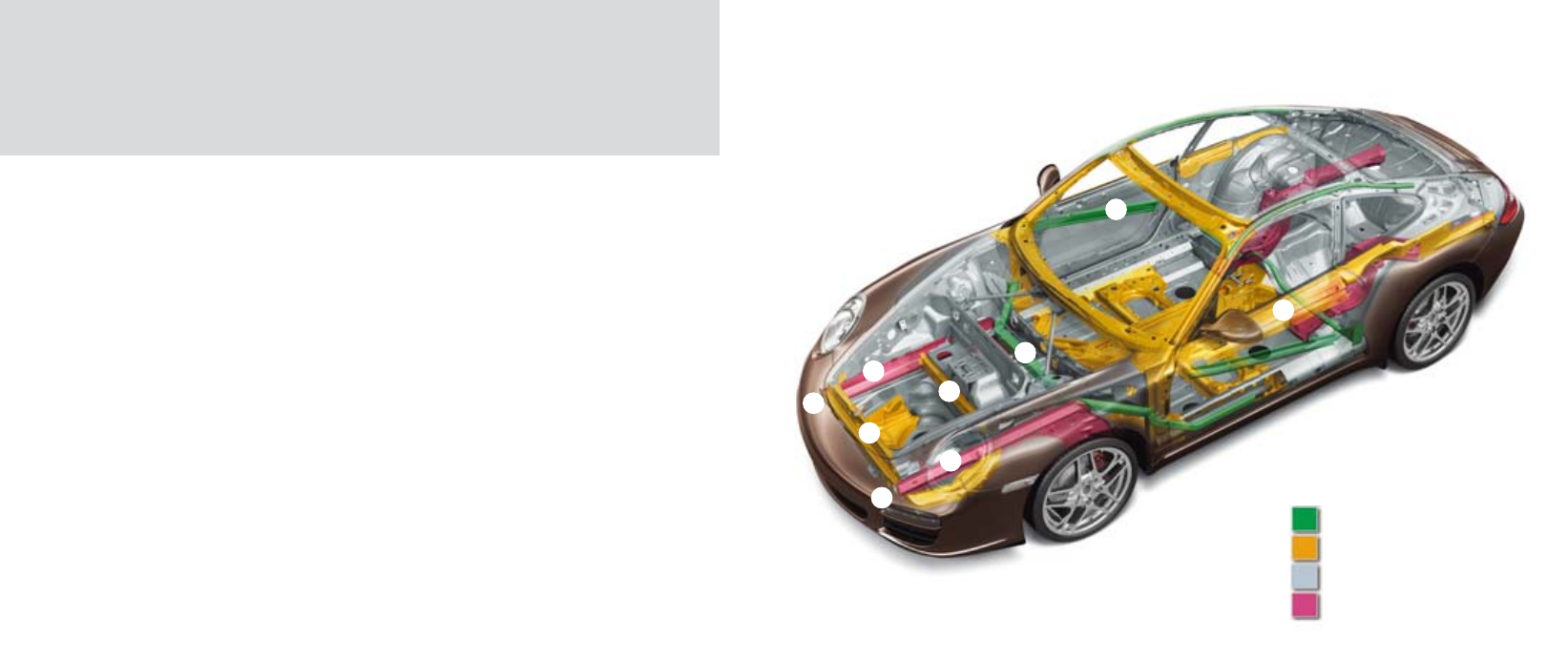
·90·
The new 911 complies with all
statutory requirements worldwide
in respect of occupant safety,well
in excess of the legal limits in
terms of front, offset, side and
rear impact protection.
The reinforced bodyshell structure
contains a highly resiliant pas-
senger cell which offers high
levels of protection in the event
of an impact. A patented system
of longitudinal and transverse
members (1) is used at the front.
In the event of an accident,
three separate load paths absorb
energy, disperse the force of
impact and minimise deformation
of the passenger cell.
In addition, the front benefits from
an extremely rigid bulkhead cross
member (2) made of ultra high-
strength steel.This is designed
to absorb impact forces from the
longitudinal members to reduce
deformation of the footwell and
provide improved protection
for the feet and legs. In a minor
collision, a system of easily
replacable impact absorbers (3)
prevent costly damage to the
underlying bodyshell.
Also contributing to the overall
rigidity of the car are the
reinforced doors (4).The forces
exerted in a frontal collision are
additionally transmitted along a
higher load path (5). For the
protection of its occupants, it
has therefore been possible
to improve the deformation
characteristics of the passenger
cell even further.
Passive safety: engineered design.
A crucial quality of any boxer: the ability to take a punch.
5
4
3
3
1
2
1
1
1
·91·
The new 911 | Safety
Since 1985, all Porsche doors
have had a ‘crash barrier’ made
of ultra high-strength steel built
into them – otherwise known
as side impact protection.The
new 911 models also have
additional reinforcement with
super high-tensile boron steel
integrated into the doors.
Porsche was the first manufacturer
in the world to use a hot-dip
galvanised steel shell.Today, too,
high-quality surface protection
ensures a consistently high
level of crash protection, even
after many years on the road.
Super high-strength steel
High-strength steel
Sheet steel
Tailored blanks


















